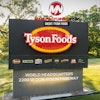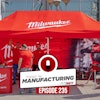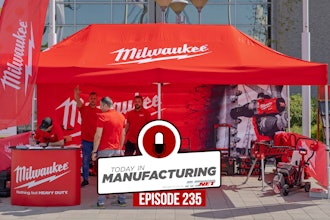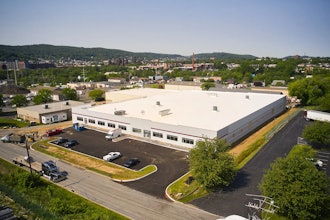Under the Federal Clean Air Act (CAA), many manufacturing operations have become subject to stricter local regulations regarding both VOC (volatile organic compound) and HAP (hazardous air pollutant) emissions. The CAA singles out 188 air pollutants that are of special concern, many of which are used in everyday production and/or manufacturing atmospheres.
Depending upon the quantity of VOCs and/or HAPs involved, many businesses either have or will be required to install new or additional air pollution control equipment. With more than 25 years of proven success in a wide variety of industries, both catalytic and thermal oxidation have become popular methods for controlling these VOC and/or HAP emissions. These systems destroy the harmful VOCs and HAPs emitted from a manufacturing process by collecting the emissions and destroying them using elevated temperature and/or an industrial grade catalyst. Today's systems utilize high-efficiency heat exchangers, natural-gas-fired burners, industrial-grade blowers, electric or pneumatic actuators and programmable logic controllers (PLC) to ensure safe and efficient operation.
Regenerative thermal oxidizers (RTO)
Regenerative thermal oxidizers (RTOs) are designed to destroy VOCs/HAPs from process exhaust fumes. Destruction efficiencies of 98%+ can typically be guaranteed; efficiencies of 99%+ can be achieved at additional cost by using an integrated valve-switch-purge-containment chamber. The basic design concept of thermal oxidization is to promote a chemical reaction of the VOC/HAP with oxygen at elevated temperatures. This reaction destroys the pollutant in the air stream by converting it to CO2, H2O and heat. The rate of reaction is controlled by three interdependent and critical factors: time, temperature and turbulence.
In operation, the process exhaust fumes are forced into the RTO inlet manifold (with a high-pressure supply fan) and directed into one of the energy recovery canisters by use of inlet-control (switching) valves. The VOC/HAP-laden air passes from the valve assembly vertically through the first of two heat-exchanger canisters where it adsorbs heat from the ceramic media (thus eventually cooling the media). This preheated air then enters the combustion chamber (typically at a temperature close to that required for oxidation), is thoroughly mixed for temperature uniformity (turbulence), and held in the combustion chamber at elevated temperatures of 1,500 degrees F to 1,800 degrees F (temperature) between 0.3 and 1.0 seconds (time). VOC/HAP destruction takes place within the combustion chamber, where auxiliary fuel is introduced if necessary.
After passing through the combustion chamber the clean (hot) air then is routed downward through the second energy recovery canister where the heat generated during thermal oxidation is adsorbed by the ceramic media (thus preheating the media for the next cycle). The clean (cooled) air is routed to atmosphere through outlet control (switching) valves, the exhaust manifold and ultimately through the exhaust stack. To maximize heat exchange, the switching valves alternate the airflow path between the canisters to continuously regenerate the heat stored within the ceramic media. Thermal efficiencies range from 85% to 95%. To maintain low external shell temperatures and minimize radiant heat loss, the combustion chamber is insulated with long-life ceramic fiber modules.
Catalytic oxidizers
Catalytic Oxidizers are also designed to completely destroy VOCs/HAPs from the process exhaust fumes. Destruction efficiencies of 98%+ can typically be guaranteed; efficiencies of 99%+ can be achieved at an additional expense by installing more catalyst. The basic design concept of catalytic oxidation is to utilize an industrial-grade catalyst to promote the chemical reaction at lower temperatures, as compared to thermal oxidation.
The VOC/HAP still must be mixed with oxygen and heated to an elevated temperature, thus destroying the pollutant in the air stream by converting it to CO2, H2O and heat. The rate of reaction is controlled by the temperature in the catalyst chamber and the amount of time the pollutant spends within the catalyst itself. Because of lower operating temperatures, catalytic oxidation commonly requires less energy to operate.
In operation, process exhaust fumes are forced into the catalytic oxidizer inlet plenum (using a high-pressure supply fan) and directed through the "cold" side of a high-efficiency, counter-flow plate-type heat exchanger. VOC/HAP-laden air then enters the combustion chamber (typically at a temperature near that required for oxidation) where it is thoroughly mixed for temperature uniformity. To maintain a set point temperature, auxiliary fuel is introduced if necessary. The preheated stream (500 to 650 degrees F) then passes through a fixed bed of industrial-grade catalyst where VOC/HAP destruction takes place.
After passing through the catalyst chamber, the clean (hot) air is then routed back through the "hot" side of the heat exchanger where it continuously preheats the incoming process air. Upon exiting the heat exchanger, the clean (cooled) air is routed back to atmosphere through an exhaust chamber and ultimately through the exhaust stack. Heat exchangers in standard catalytic units are typically fabricated of heavy-duty stainless steel. Thermal efficiencies range from 50% to 80%. The internal chambers of a catalytic oxidizer are manufactured entirely of heavy-gauge stainless steel. Thermal expansion joints are incorporated where necessary. To maintain low external shell temperatures and minimize radiant heat loss, internal chambers are covered with blanket insulation and clad with aluminum sheet.
When selecting and/or sizing an air-pollution control system, consider your facility's growth expectations for the next two to five years. It is typically less costly to install a system designed to handle additional capacity now rather than install a second system later. Also, many equipment vendors can provide and install systems under a turnkey contract where the vendor is responsible for all aspects of both installation and start-up. Seek an experienced vendor who can provide customized solutions as well as estimated operating and maintenance costs over the expected life span of the system.

















